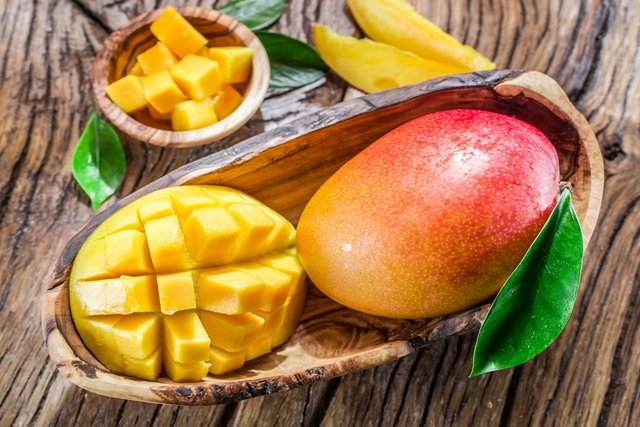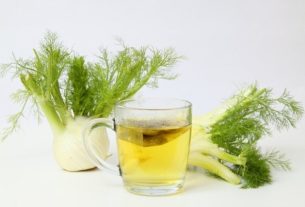Mango is a fruit that helps fight inflammation, strengthen the immune system and reduce the risk of cardiovascular diseases, because it has many nutrients such as vitamin A, vitamin C, magnesium, potassium and polyphenols such as mangiferin, kaempferol and benzoic acid.
On the other hand, mango has a lot of fructose, which is a type of sugar found naturally in the fruit and the more ripe it is, the greater its quantity. Therefore, this fruit is not recommended for those who need to lose weight, especially if it is eaten very frequently, as it is a fruit that contains many calories.
Mango is very versatile and even its peel can be consumed, naturally or in preparations such as juice, jelly, smoothies, salad, sauce. Furthermore, the mango leaf can also be used to prepare tea for medicinal purposes. See what mango leaf tea is for.
Benefits of Mango
The main benefits of mango are:
1. Improves the functioning of the digestive system
Mango is an excellent fruit for improving constipation as it is very rich in soluble fibers that act by absorbing water from the digestive tract, forming a gel that helps regulate the intestines. Furthermore, the mangiferin present in mango acts as a natural laxative, increasing bowel movement and facilitating the elimination of feces.
Mangiferin also protects the liver, improves the action of bile salts which are important for the digestion of fats and helps in the treatment of worms and intestinal infections.
Furthermore, mango contains amylases, which are enzymes that break down food, facilitating its absorption and, therefore, regulating and improving digestion.
2. Fights gastritis
Mango contains mangiferin and benzophenone in its composition, which have a protective effect on the stomach due to its antioxidant action, reducing damage to stomach cells, in addition to reducing the production of stomach acid and, therefore, can help in the treatment of gastritis or gastric ulcer.
3. Helps control blood sugar
Some studies show that polyphenols such as gallic acid, chlorogenic acid and ferulic acid can stimulate the production of insulin and reduce blood sugar and glycated hemoglobin levels, which is an indicator of diabetes, and can be an important ally in the treatment of diabetes. .
However, mango should be consumed in moderation and in small portions or it can be used together with other foods rich in fiber. Furthermore, the best way to take advantage of the properties of mango to help control blood sugar is to consume this greener fruit, as ripe mango can have the opposite effect and increase blood sugar.
4. Has anti-inflammatory action
Mangiferin, gallic acid and benzophenone present in mango have anti-inflammatory properties and are very useful in the treatment of intestinal inflammation such as ulcerative colitis or Crohn’s disease, for example, as it reduces the production of inflammatory substances such as prostaglandins and cytokines.
Furthermore, the anti-inflammatory action of mango in the intestine helps prevent cellular damage that can cause cancer in the rectum and intestine.
5. Has antioxidant action
Vitamin C and polyphenolic compounds such as mangiferin, quercetin, kaempferol, gallic acid and caffeic acid have antioxidant action, combating free radicals and reducing cell damage. Thus, mango helps prevent and combat diseases associated with oxidative stress caused by free radicals such as atherosclerosis, heart attack, stroke, diabetes or cancer.
6. Fights cancer
Some studies using leukemia and breast, prostate and intestinal cancer cells show that polyphenols, especially mangiferin present in mango, have antiproliferative action, reducing the proliferation of cancer cells. Furthermore, polyphenols have antioxidant action, which act to combat free radicals that cause damage to cells.
However, studies in humans are still needed to prove this benefit. Discover more foods that help prevent cancer.
7. Protects against cardiovascular diseases
The soluble fibers present in mango help reduce bad cholesterol and triglycerides, which are responsible for forming fatty plaques in the arteries, as it reduces the absorption of fats from food. Thus, mango improves the functioning of the arteries and helps prevent heart attack, heart failure and stroke.
Furthermore, mangiferin and vitamin C have anti-inflammatory and antioxidant effects that help reduce cell damage, keeping blood vessels healthy, and polyphenols, magnesium and potassium help relax blood vessels and control blood pressure.
8. Strengthens the immune system
Mango is rich in nutrients such as vitamins A, B, C, E and K and folate that stimulate the production of white blood cells, which are essential defense cells to prevent and fight infections and, therefore, mango helps to strengthen the system immune.
Furthermore, mangiferin stimulates the body’s defense cells to fight infections.
9. Combate a herpes labial
Some studies show that the mangiferin present in mango has action against the cold sore virus by inhibiting the virus and preventing it from multiplying, and can be an important ally in the treatment of cold sores. Furthermore, mangiferin can also inhibit the multiplication of the genital herpes virus. However, studies in humans are still needed to prove this benefit.
10. Maintains eye health
Mango maintains eye health by having antioxidants such as lutein and zeaxanthin that act as sun ray blockers, preventing damage to the eyes caused by sunlight.
Furthermore, the vitamin A in mango helps prevent eye problems such as dry eyes or night blindness.
11. Improves skin quality
Mango has vitamin C and A which are antioxidants that help fight free radicals that cause skin aging. Vitamin C also works by increasing collagen production, which is important for combating sagging skin and wrinkles, improving the quality and appearance of the skin.
Nutritional information table
The following table shows the nutritional composition for 100 grams of mango.
It is important to highlight that to obtain all the benefits mentioned above, mango must be included in a balanced and healthy diet, associated with physical activity.
To find out how to include mango in a healthy diet, make an appointment with the nutritionist closest to you:
How to consume
Although there is no specific amount recommended for mango consumption, the minimum recommended daily intake of fruit is 2 to 3 servings, which corresponds to between 160 and 240 g.
Mango can be consumed green, ripe and even with the peel, in its natural form or in recipes such as juices, jellies, smoothies, green salads or sauces. Furthermore, mango leaves can also be used in the form of teas for medicinal purposes.
Healthy mango recipes
Some mango recipes are quick, easy to prepare and nutritious:
1. Mango juice
Ingredients:
- 1 manga;
- 500 mL of water.
Preparation mode:
To make mango juice, simply add water and the peeled, cut mango to a blender. Then strain and blend again in the blender for just 1 minute, and drink immediately.
2. Manga Foam
Ingredients:
- 4 large, very ripe mangoes;
- 200 ml of sweetened natural yogurt;
- 1 sheet of unflavored gelatin dissolved in water.
Preparation mode:
Blend the ingredients in a blender until uniform. Place in a glass container and refrigerate for 2 hours. Serve chilled.
3. Manga vitamin
Ingredients:
- 2 sliced ripe mangoes;
- 1 glass of milk;
- Ice cubes;
- Honey to taste to sweeten.
Preparation mode:
Blend all ingredients in a blender, pour into a glass and drink immediately after preparation.
4. Mango salad with arugula
Ingredients:
- 1 mature branch;
- 1 bunch of arugula;
- Ricotta cheese cut into cubes;
- Salt, black pepper and olive oil to taste.
Preparation mode:
Wash the mango, remove the skin and cut the mango pulp into cubes. Wash the arugula. In a container, place the arugula, mango and ricotta. Season with salt, black pepper and olive oil to taste.

Sign up for our newsletter and stay up to date with exclusive news
that can transform your routine!
Warning: Undefined array key "title" in /home/storelat/public_html/wp-content/plugins/link-whisper-premium/templates/frontend/related-posts.php on line 12
Warning: Undefined array key "title_tag" in /home/storelat/public_html/wp-content/plugins/link-whisper-premium/templates/frontend/related-posts.php on line 13




